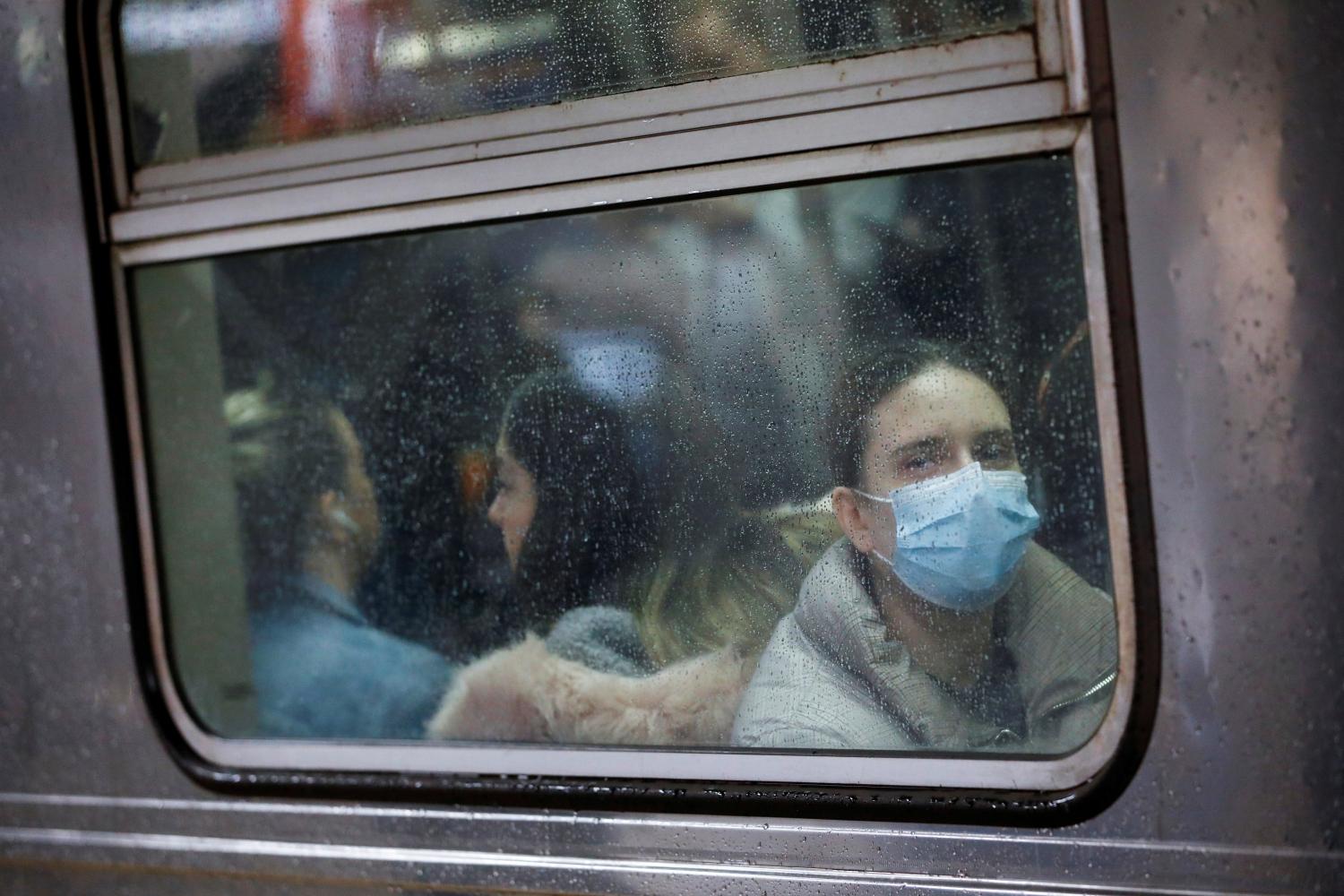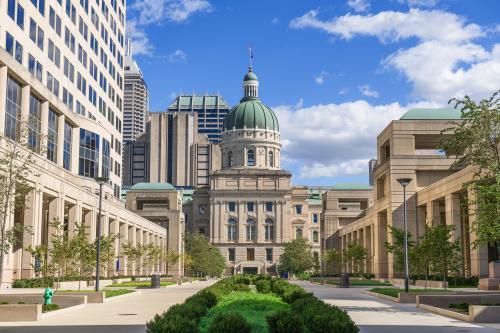This analysis is part of the American Rescue Plan: Strategies for Local Leaders series, a feature of the COVID-19 Metro Recovery Watch.
On May 10, the U.S. Treasury Department released its interim final rule on the use of the American Rescue Plan (ARP) Act’s State and Local Fiscal Recovery Funds. While the publication of most federal regulations doesn’t usually turn a lot of heads, this one is different: It will govern the allocation of $350 billion that ARP provided to states, counties, cities, and tribal and territorial governments without a great deal of statutory guidance. Indeed, ARP makes clear that these funds provide greater flexibility than similar resources provided under the CARES Act from spring 2020.
That noted, ARP does specify that fiscal recovery funds have four authorized uses:
- Responding to public health needs and economic damage from the pandemic
- Providing premium (i.e., hazard) pay for essential workers
- Replacing lost revenue
- Investing in necessary water and broadband infrastructure
ARP also restricts receiving governments from using the funds to offset tax cuts or to shore up public pensions (more on that below).
This being an interim final rule, the Treasury Department can still change it, and will be considering feedback submitted through the federal eRulemaking portal. For now, we see four key takeaways from the rule that can guide state, local, and tribal leaders’ decisions about how to deploy the funds toward promoting what the rule terms a “stronger, more equitable economy.”
-
Recipient governments have enormous flexibility to help disproportionately impacted populations and communities.
The interim final rule specifies that funds deployed for ARP’s first purpose—responding to public health needs and economic damage from the pandemic—must respond “to the disease itself or the harmful consequences of the economic disruptions resulting from or exacerbated by the COVID-19 public health emergency.”
On the public health front, a number of pandemic-related expenses qualify: COVID-19 prevention and mitigation, medical care (including mental health and substance abuse treatment), public health and safety staff, and relevant implementation expenses.
On the economic front, the Treasury Department points to a number of eligible uses: assistance to unemployed workers (including job training); deposits to replenish state unemployment insurance trust funds; administrative expenses to improve the efficacy of economic relief programs (e.g., through data system upgrades); direct aid to households; assistance to small businesses and nonprofits; rehiring government staff; and aid to impacted industries (specifically tourism, travel, and hospitality). Across these economic relief categories, governments must be able to demonstrate that the ultimate recipients of funds experienced economic harm from the pandemic (such as loss of earnings or revenue) and that the funds they distribute “respond to” that harm in ways that are “related and reasonably proportional.”
How the department will audit compliance with these provisions is not yet clear, but the guidance would seem to recommend that governments employ “cautious flexibility,” carefully documenting who they are helping, and why, with ARP funds in these categories.
The rule provides even greater flexibilities for state and local spending in lower-income neighborhoods (Qualified Census Tracts), tribal government spending, and spending targeted to “other populations, households, or geographic areas disproportionately impacted by the pandemic.” In these places, the public health and economic impacts of the pandemic often multiplied pre-existing “systemic public health and economic challenges that may have contributed to more severe impacts of the pandemic[.]” The Treasury Department’s guidance thus recognizes that there is limited value and ability for governments to try to parse out why and how their spending in these communities responds specifically to the effects of the pandemic.
The guidance points to a wider set of presumed eligible uses in these impacted places, such as investing in affordable housing, homelessness prevention, and lead abatement; addressing disparities in educational resources for high-poverty schools and vulnerable students; and promoting healthy childhood environments through child care, home visiting programs, and services for system-involved families and youth. Clearly, these eligible uses are strongly biased toward investments in human needs in impacted communities, rather than more traditional economic development (e.g., support for industry or physical upgrades).

-
Recipient governments have wide latitude to use the funds to provide premium (hazard) pay to workers earning modest wages.
As noted above, ARP names premium pay compensation for essential workers as an authorized use of State and Local Fiscal Recovery Funds. As our colleague Molly Kinder explains, effective models already exist for state and local governments to deploy these funds toward workers who risked the most during the pandemic while earning the least.
The Treasury Department guidance provides significant, welcome flexibility to state and local governments to provide premium pay to essential workers. The rule names a number of qualifying sectors, including health care, public health and safety, education, transportation, and food production and services, but also provides governments with the ability to add other sectors deemed critical during the pandemic.
ARP allows for premium pay to be awarded at up to $13 per hour, to a maximum of $25,000 per worker. The rule clarifies that governments should prioritize compensation for lower-income eligible workers, and imposes additional reporting requirements if they award premium pay to workers such that they would earn at least 50% more than their state’s average wage.
Importantly, state and local officials can apply premium pay retrospectively for work performed at any time since the start of the pandemic—recognizing that many essential workers have yet to be adequately compensated for work they previously performed. At the same time, the rule also provides flexibility to recipient governments to apply premium pay prospectively. Some state and local leaders may consider using the funds to provide incentives (essentially, hiring bonuses) to workers to fill in-person occupations with an abundance of vacancies, such as in health care, care work, public safety, retail, and restaurants.
In these ways, the interim final rule provides wide latitude and strong encouragement to state and local governments to devote a portion of their fiscal recovery funds to compensate essential workers who kept their neighbors fed, protected, and healthy over the past year.
-
Recipient governments can use the funds to address certain critical infrastructure needs.
ARP specifies that State and Local Fiscal Recovery Funds can support necessary investments in drinking water, waste and stormwater, and high-quality broadband service. The interim final rule takes this a step further, defining “necessary” investments as those “designed to provide an adequate minimum level of service and are unlikely to be made using private sources of funds.”
For water and sewer investments, the rule aligns eligible uses to projects that would be eligible for support from the Environmental Protection Agency’s Clean Water State Revolving Fund or Drinking Water State Revolving Fund. In this way, governments can expedite project identification and investment, and create a near-term positive impact on community public health and well-being. The rule also “encourages” recipients to select projects that will improve resiliency to the effects of climate change, consistent with efforts to protect lower-income communities that tend to be most affected by climate disasters; and to replace lead service lines associated with negative lifelong impacts for exposed children.
ARP’s investments in broadband infrastructure represent a direct response to the pandemic-revealed need for reliable, high-speed internet access for remote school, work, and health care delivery. The rule specifies that eligible investments must be designed to provide services that meet “adequate” speeds—at least 100 megabits per second wherever practicable—for unserved and underserved households and businesses. Importantly, the rule also emphasizes that financial assistance to impacted households for broadband subscriptions and digital literacy are also eligible uses. As our colleague Adie Tomer has argued, making broadband more affordable and boosting digital skills are critical parts of a systems-level approach to improving broadband’s impacts.
The rule also clarifies that general infrastructure projects—say, road construction or bridge repair unrelated to COVID-19—are not permitted uses of the flexible ARP resources. State, local, and tribal governments may be able to draw on other ARP provisions to support infrastructure investments in transit, school buildings, and housing, but the Treasury Department’s guidance largely precludes governments from using these flexible resources to tackle their capital projects list. The administration’s proposed American Jobs Plan, on the other hand, would provide substantial assistance to help states and cities address those investment needs.
-
There are several things recipient governments expressly cannot do with the funds.
While the Treasury Department’s rule provides a good deal of discretion to state, local, and tribal governments on their use of recovery funds (consistent with the ARP statute), it also spells out several things for which they cannot use the dollars. These include:
- Paying down unfunded pension liabilities
- Offsetting tax cuts
- Applying as matching funds toward other federal grants
- Paying interest or principal on outstanding debt, or for consent decrees/legal settlements
- Contributing to rainy day funds
These provisions of the rule implement certain statutory prohibitions, and aim to ensure that expenditures address the impacts of the pandemic rather than longer-running fiscal issues facing state, local, and tribal governments.
Overall, the Treasury Department’s interim final rule provides useful direction as to how recipient governments should prioritize deploying the significant resources available through the State and Local Fiscal Recovery Funds. They retain ample room for creativity and the ability to address a variety of specific local needs. Importantly, the more those needs reflect the direct and disproportionate impacts of the pandemic—especially on vulnerable populations and places—the greater discretion state, local, and tribal leaders will enjoy.
The Brookings Institution is committed to quality, independence, and impact.
We are supported by a diverse array of funders. In line with our values and policies, each Brookings publication represents the sole views of its author(s).










Commentary
Four takeaways on new guidance for state and local fiscal relief under the American Rescue Plan
May 13, 2021